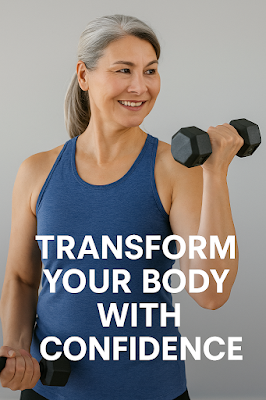How Mental Health Affects Physical Health
Introduction
Have you ever felt physically unwell during stressful times? Many people don’t realise how deeply mental health affects physical health. Your mind and body are closely connected, influencing each other in ways that shape your overall wellbeing. In this blog, we’ll explore how mental health impacts physical health, why this connection matters, and what you can do to maintain balance for a healthier, happier life.
Understanding the Mind-Body Connection
What is mental health?
Mental health refers to your emotional, psychological, and social wellbeing. It affects how you think, feel, act, handle stress, relate to others, and make decisions in daily life.
What is physical health?
Physical health is about your body’s condition – including organs, muscles, bones, immunity, and how well everything functions together.
Both are essential for a healthy lifestyle, and poor mental health can directly affect your physical health in surprising ways.
How Does Mental Health Affect Physical Health?
1. Stress Weakens Immunity
Chronic stress releases hormones like cortisol, which, when elevated for long periods, weaken your immune system. This makes you more prone to infections, colds, or even chronic illnesses.
2. Anxiety Causes Physical Symptoms
People with anxiety often experience:
▪️Rapid heartbeat
▪️Shortness of breath
▪️Stomach issues (nausea, pain, or IBS)
▪️Muscle tension and headaches
These are real physical symptoms triggered by mental distress.
3. Depression Impacts Your Body
Depression isn’t just emotional sadness. It can cause:
▪️Fatigue and low energy
▪️Appetite changes (weight loss or gain)
▪️Poor sleep or oversleeping
Increased risk of heart disease and diabetes due to inactivity and hormonal changes
4. Sleep Disturbances
Mental health issues like anxiety or depression often cause insomnia or restless sleep. Poor sleep, in turn, leads to:
▪️Low immunity
▪️Hormonal imbalance
▪️Increased pain sensitivity
▪️Weight gain and fatigue
5. Chronic Diseases and Mental Health
People with long-term mental health conditions are at higher risk of:
▪️Heart disease
▪️Diabetes
▪️High blood pressure
▪️Obesity
This is because mental distress may reduce motivation to exercise, eat healthily, or follow medical advice.
6. Pain Perception
Studies show that people with depression or anxiety feel physical pain more intensely, including back pain, headaches, or unexplained body aches.
Why This Connection Matters
Ignoring mental health doesn’t just impact your mind – it affects your entire body. Understanding this helps you take better care of yourself. For instance, treating anxiety can reduce stomach problems, and addressing depression can improve sleep and energy levels.
How to Improve Both Mental and Physical Health
✅ Exercise regularly
Physical activity releases endorphins, which improve mood, reduce anxiety, and boost overall energy.
✅ Eat a balanced diet
Nutrition affects brain chemicals and hormones. Omega-3s, whole grains, and fruits support mental wellbeing.
✅ Get enough sleep
Aim for 7-9 hours. Good sleep heals the mind and body, improves immunity, and balances hormones.
✅ Practice stress management
Meditation, yoga, breathing exercises, and gratitude journaling can reduce stress levels and protect your health.
✅ Stay connected socially
Spending time with friends, family, or communities can improve mood and reduce feelings of isolation.
✅ Seek professional help when needed
Therapists, counsellors, and doctors can guide you towards treatments or lifestyle changes that benefit both mind and body.
Final Thoughts
Your mental health is just as important as your physical health. They work together to build a healthy lifestyle that supports your goals, happiness, and longevity. Remember, taking care of your mind is an investment in your body, and vice versa. Prioritise both to live a balanced, fulfilling life.






















